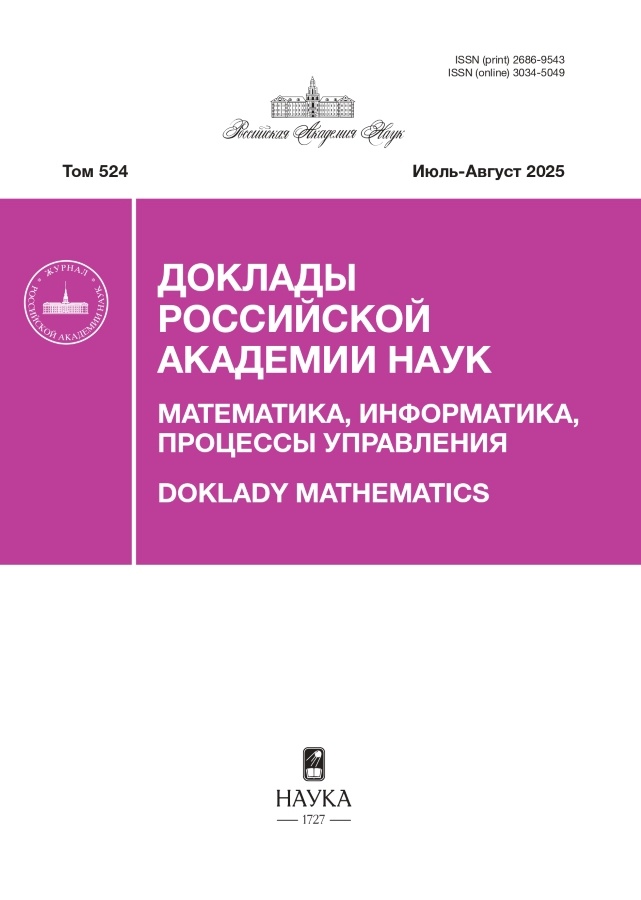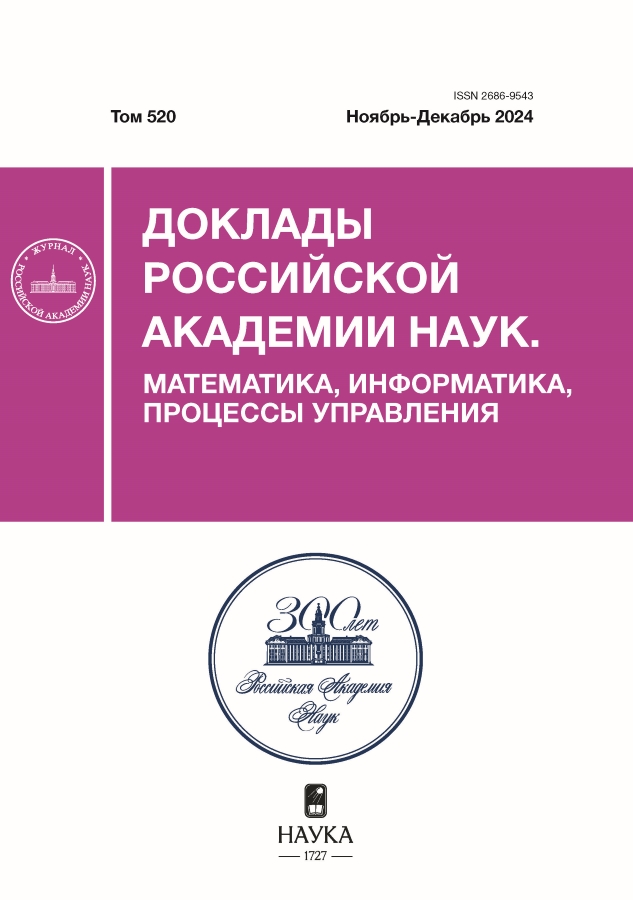МЕТОД ТУННЕЛЬНОЙ КЛАСТЕРИЗАЦИИ
- Авторы: Алескеров Ф.Т.1,2, Мячин А.Л.1,2, Якуба В.И.1,2
-
Учреждения:
- Национальный исследовательский университет “Высшая школа экономики”
- ФГБУН Институт проблем управления им. В. А. Трапезникова РАН
- Выпуск: Том 520 (2024)
- Страницы: 29-34
- Раздел: МАТЕМАТИКА
- URL: https://rjeid.com/2686-9543/article/view/682687
- DOI: https://doi.org/10.31857/S2686954324060052
- EDN: https://elibrary.ru/KLEIQU
- ID: 682687
Цитировать
Полный текст
Аннотация
Предлагается новый метод быстрого поиска закономерностей в числовых данных большой размерности, названный “туннельной кластеризацией”. Основными преимуществами нового метода являются: относительно невысокая вычислительная сложность; эндогенное определение состава и количества кластеров; высокая степень интерпретируемости конечных результатов. Приведено описание трех различных вариаций: с фиксированными гиперпараметрами, адаптивными, а также комбинированный подход. Рассмотрены три основных свойства туннельной кластеризации. Практическое применение приведено как на синтетических (100.000 объектов), так и на классических тестовых данных.
Ключевые слова
Об авторах
Ф. Т. Алескеров
Национальный исследовательский университет “Высшая школа экономики”; ФГБУН Институт проблем управления им. В. А. Трапезникова РАН
Email: alesk@hse.ru
Москва, Россия; Москва, Россия
А. Л. Мячин
Национальный исследовательский университет “Высшая школа экономики”; ФГБУН Институт проблем управления им. В. А. Трапезникова РАН
Email: amyachin@hse.ru
Москва, Россия; Москва, Россия
В. И. Якуба
Национальный исследовательский университет “Высшая школа экономики”; ФГБУН Институт проблем управления им. В. А. Трапезникова РАН
Email: yakuba@ipu.ru
Москва, Россия; Москва, Россия
Список литературы
- Digital 2023: Global Overview Report. https://datareportal.com/reports/ digital-2024-global-overview-report (дата обращения: 04.06.2024).
- SimilarWeb. https://www.similarweb.com/ru/ (дата обращения 04.06.2024).
- Cormack R. M. A review of classification // Journal of the Royal Statistical Society: Series A (General). 1971. V. 134. №. 3. P. 321–353.
- Draper N. R., Smith H. Applied regression analysis. John Wiley & Sons, 1998.
- Chandola V., Banerjee A., Kumar V. Anomaly detection: A survey // ACM computing surveys (CSUR). 2009. V. 41. №. 3. P. 1–58.
- Cheng B., Titterington D. M. Neural networks: A review from a statistical perspective // Statistical science. 1994. P. 2–30.
- Myachin A. L. Pattern analysis in parallel coordinates based on pairwise comparison of parameters // Automation and Remote Control. 2019. V. 80. P. 112–123.
- Shawe-Taylor J., Cristianini N. Kernel methods for pattern analysis. Cambridge university press, 2004.
- Agrawal R., Imieliński T., Swami A. Mining association rules between sets of items in large databases // Proceedings of the 1993 ACM SIGMOD international conference on Management of data. 1993. P. 207–216.
- Anderberg M. R. Cluster analysis for applications: probability and mathematical statistics: a series of monographs and textbooks. Academic press, 2014.
- Mahesh B. Machine learning algorithms – a review // International Journal of Science and Research (IJSR). [Internet]. 2020. V. 9. №. 1. P. 381–386.
- Mirkin B. Clustering for data mining: a data recovery approach. Chapman and Hall/CRC, 2005.
- Romesburg C. Cluster analysis for researchers. Lulu. com, 2004.
- Aleskerov F., Emre Alper C. A Clustering Approach to Some Monetary Facts: A Long‐Run Analysis of Cross‐Country Data // The Japanese Economic Review. 2000. V. 51. №. 4. P. 555–567.
- Inselberg A. The plane with parallel coordinates // The visual computer. 1985. V. 1. P. 69–91.
- Fisher R. A. The use of multiple measurements in taxonomic problems // Annals of eugenics. 1936. V. 7. №. 2. P. 179–188.
- Machine Learning Repository. https://archive. ics.uci.edu/dataset/109/wine (дата обращения: 04.06.2024)
Дополнительные файлы











